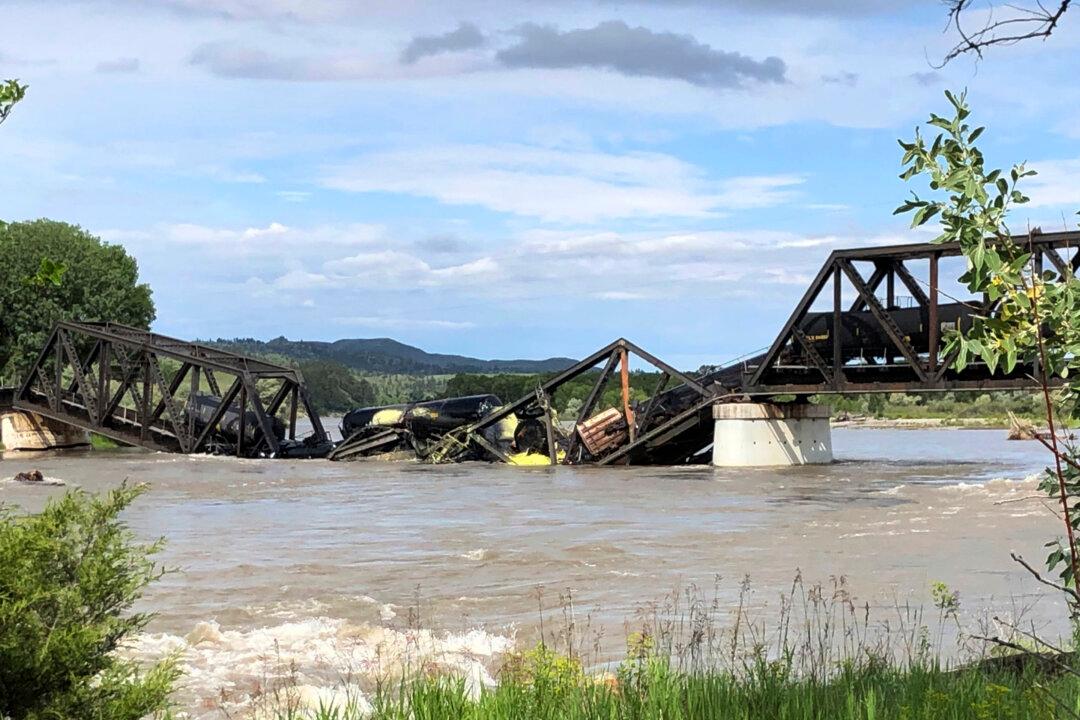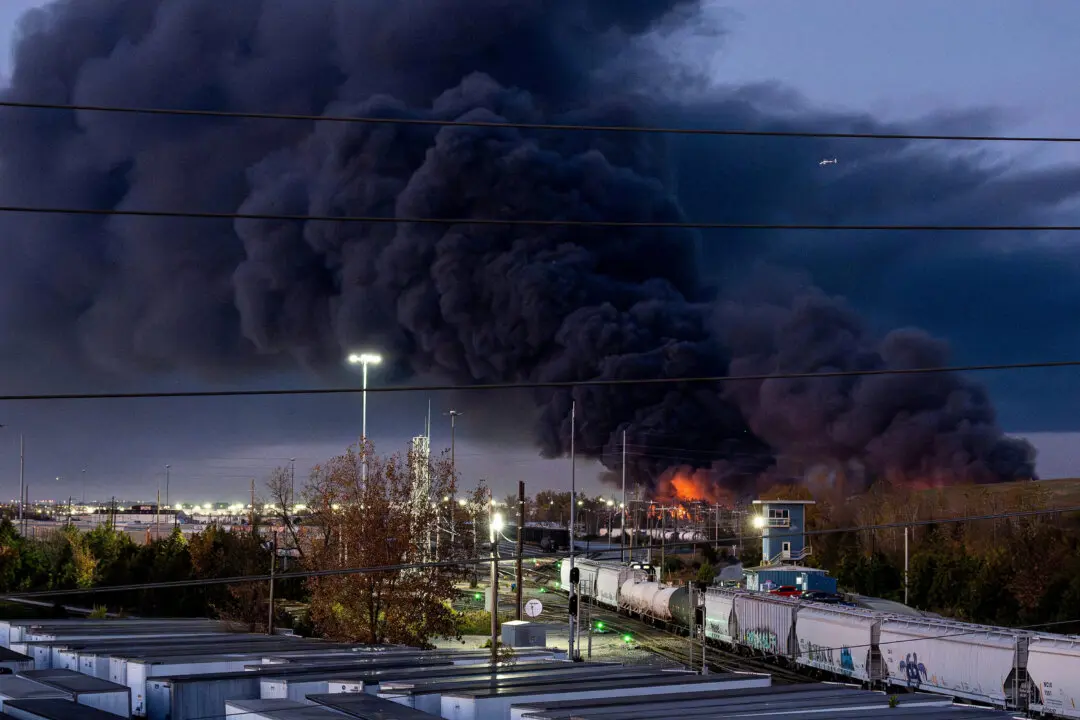COLUMBUS, Mont.—Preliminary testing of water and air quality along a stretch of the Yellowstone River where train cars carrying hazardous materials fell into the waterway following a bridge collapse did not indicate any threat to the public, state and federal officials said Sunday.
The seven mangled cars that carried hot asphalt and molten sulfur remained in the rushing river a day after the bridge gave way near the town of Columbus, about 40 miles west of Billings, Montana. The area is in a sparsely populated section of the Yellowstone River Valley, surrounded by ranch and farmland.





